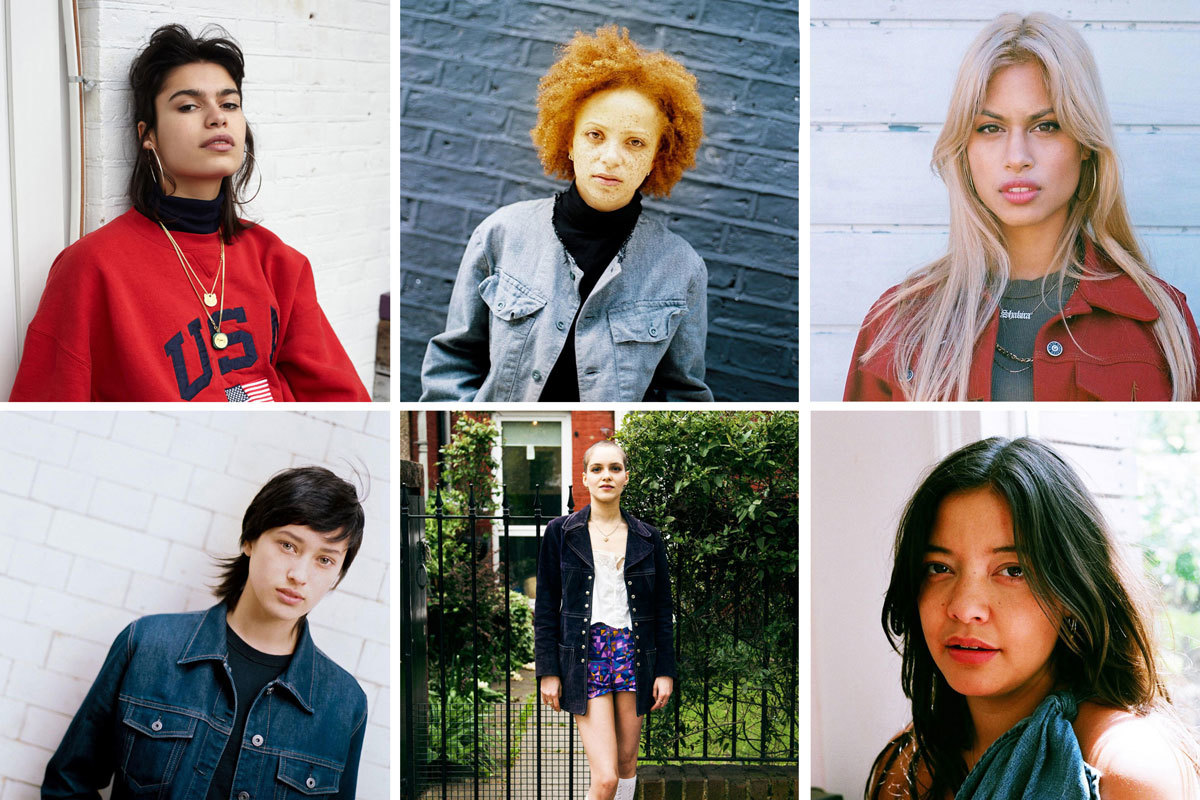The face of the fashion industry has adopted many different looks; what’s not hot one day is the hottest thing the next. The 80s gave us athletic supers with big hair. The 90s fought against all that glamour and the look became withdrawn, skinny “heroin chic.” And the 00s fawned over the elfin qualities of Gemma Ward, Agyness Deyn and Lily Cole. So what will define the 10s? We are slap bang in the middle of the post-internet era; the answer is on Tumblr and Instagram.
Tech is having a huge impact on the faces and bodies of the fashion industry. There has been a seismic shift towards street casting non-professional models. This may be a result of social media changing how we consume imagery and making it easier to find an interesting new face. Young photographers like Maisie Cousins source their subjects by posting on their social accounts, “When I cast models from Instagram or Facebook, it means there is already some kind of connection, even on a superficial level, but it means they themselves are willing to do it. I wouldn’t feel comfortable using an agency model, it feels too removed. The girls are often so young and the beauty ideals the industry promotes, I think, are incredibly damaging to women. I wouldn’t want someone to look at my work and feel bad about themselves. What’s the point in art you can’t relate to?”
Instagram has turned creative imagery on its head. We are bombarded with images of our friends glowing through a perfectly chosen filter. The images are beautiful and intriguing but they are relatable – they are us, and the people we know, just perfectly planned, composed and maybe retaken a few times. The mindset translates, because now we find it more interesting and relatable to see a girl or guy that could be our brother’s hot best mate in an editorial or campaign, rather than that same model who was the face of Topshop last year.
Instagram has managed to take celebrities and supermodels down from their ivory towers and ping them right there on our smart phones doing normal things like… taking a naked pregnant selfie. OK, it doesn’t exactly normalize celebrities but it does make them ubiquitous, and that’s enough of a shift. It’s less of a novelty these days to see someone like Cara D in the pages of a magazine because you can see her hanging out with her mates in more interesting scenarios on your phone anytime.
The internet has created celebrities like Cameron Dallas and Nash Grier, whose celebrity status was born from the internet by posting vines and making YouTube videos about… we’re still not sure. They don’t necessarily sing, dance or act but they do invest in and speak to their fans. This type of Insta-star phenomena trickles down, and shoots up too, because fashion is following suit. Instead of traipsing the streets and airport terminals to find the next big thing, scouts are turning to the much less time-intensive method of looking at their phones. Storm models even created an app that invites model wannabes to upload their photos in the hopes of being discovered.
Professional and established models are facing fiercer competition than ever, driven by the supply and demand mentality of the internet. Another added pressure is the demand for brand new faces that have never been seen before. As i-D Fashion Editor Max Clark comments, “Shooting somebody that hasn’t been seen in an editorial before brings a form of authenticity. It’s a weird word to use but having some sense of ownership over a model/casting gives your work an individuality that is very important. All stylists work with the same tools – the collections – but extending your casting pool is something that can be completely free from any boundaries.”
The president of New York’s Silent Models, Peter Fitzpatrick, is fighting back and stirring things up in the modeling industry. Last week the Business of Fashion announced the launch of his new app, Swipecast, that allows photographers, casting agents and stylists to book a model directly through the app and bypass the agency. It allows a model to receive 90% of his or her fee, rather than the industry standard of 70-80%. The potential is huge for the industry. Clients will have access to more and more faces and gain a little more control too, rather than using the girls that the agencies tend to push. Plus, it opens up the floor to non-conventional models and gives street cast models a formal platform. Fitzpatrick wants the app to democratize the typical standard of beauty that comes with models and allow clients access to different kinds of faces and bodies that will not necessarily be signed to an agency.
“One of the reasons we created Swipecast was to open up casting to models with a wider range of sizes, shapes, ethnicities and heights. I wanted to use our experience to create a technology solution for the industry. With Swipecast, clients will be able to use filtering tools to help them find the right kinds for their project. They’ll be able to view the model’s pictures on their Facebook and Instagram accounts. We talked to a lot of photographers and casting directors and the one common theme they kept bringing up was how much they were now relying on Instragram to get a sense of the model’s personality. Now clients will have a new tool to use, not just pictures which often are photo-shopped.”
While traditional modeling agencies aren’t going anywhere, it’s great to see the industry opening up and allowing different voices and opinions to inform what’s presented to the world as beautiful. With apps like Swipecast and anti or niche agencies popping up all over the world, we’re on the verge of something wonderful. Watch this face…
Credits
Text Ger Tierney
Clockwise from top left, photography Lotte Van Raalte, Rosie Matheson, Josh Osborne, Rosie Matheson, Ellie Smith, Grace Pickering.
